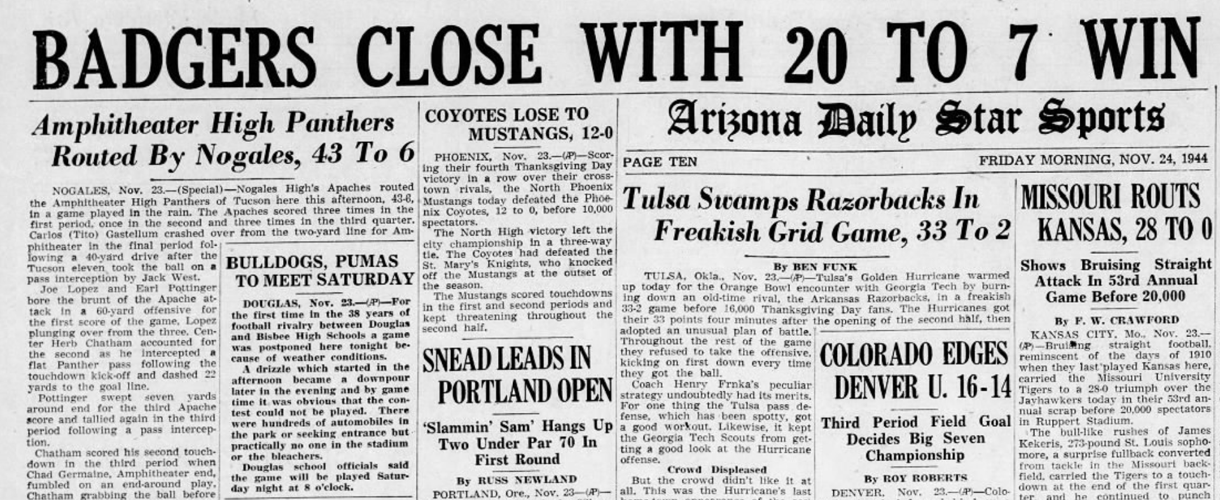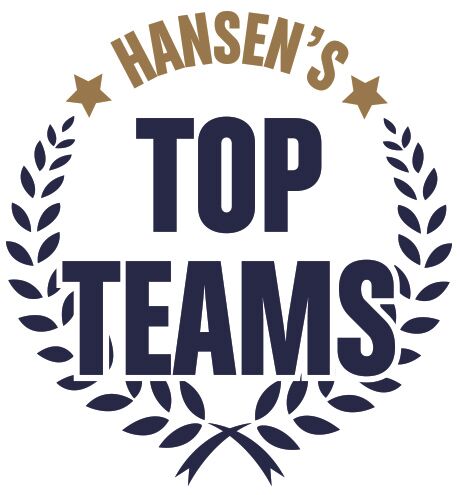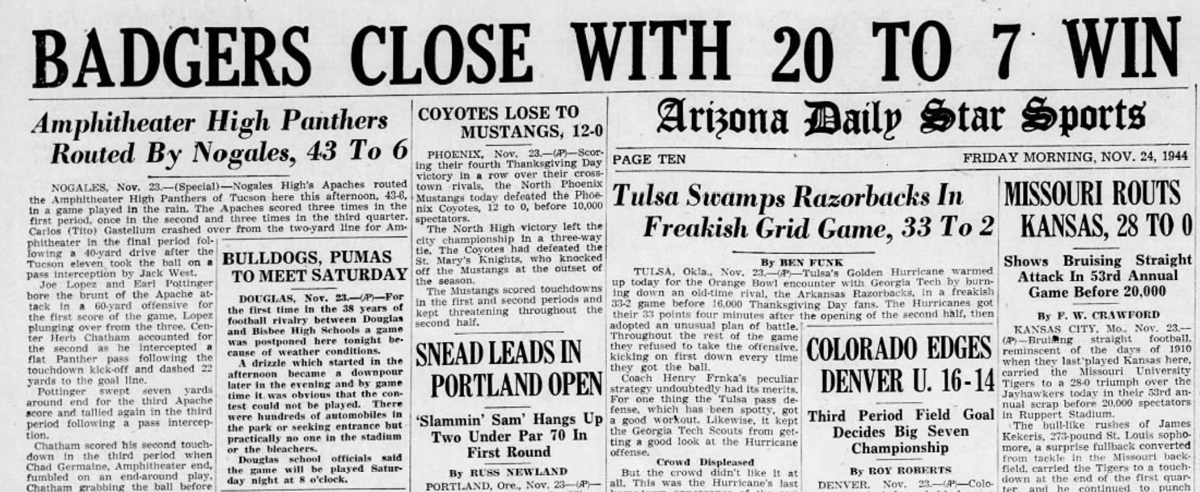On Thanksgiving Day, 1944, about 12,000 Tucsonans celebrated the holiday by sitting in the rain at Arizona Stadium as Tucson High completed an undefeated season, beating Mesa for the state football championship.
A few weeks later, the Downtown Towncats booster club held a banquet to honor what was then considered the best high school football team in Tucson history. More than 300 people attended, including Gov. Sidney Osborn and UA athletic director Pop McKale.
McKale thanked coach Rollin Gridley’s Badgers for raising more than $16,000 in ticket sales at the state championship game, which McKale said would be applied to the debt service for Arizona Stadium, built 15 years earlier.
At the banquet, Gridley became emotional not just when he named all 11 starters co-captains for posterity, but when he read the names of 22 former Tucson High students who had been killed in World War II.
The ’44 Badgers earned an historic spot in state football history, stretching its winning streak to 21 games. They outscored opponents 345-78. But there was more to it than winning football games.
In retrospect, the ’44 Badgers produced three of the most prominent high school football players on one team in Tucson history, and it had nothing to do with sports.
Frank Borman, Karl Eller and Larry McQuade were so successful in their post-football days that it’s difficult to conceive of any Tucson prep team, at any time, matching what Borman, Eller and McQuade accomplished after putting a state championship ring on their finger.
Borman became globally famous after graduating from West Point and ultimately becoming the commander of Apollo 8 as a NASA astronaut. The son of a man who operated a Mobile gas station in Tucson, Borman was the starting QB on the ’45 THS team that again went 11-0 to win another state championship.
Eller was a lineman who went on to start for the Arizona Wildcats. After college, he became a titan of business, the CEO of Circle K and one of the founding members of the NBA’s Phoenix Suns. It was Eller’s ownership group that hired future Suns owner Jerry Colangelo as its inaugural general manager. The UA’s Eller College of Management carries his name.
And then there was McQuade. The president of the THS senior class, McQuade — an all-state end — bypassed college football to accept a scholarship to Yale, where he became a Phi Beta Kappa. From there, he became a Rhodes Scholar at Oxford. (He played rugby there).
After completing his Rhodes scholarship, McQuade graduated from Harvard Law School and entered a different arena — politics.

McQuade became an assistant to the secretary of defense in President John F. Kennedy’s administration, heavily involved in the Cuban missile crisis and the cold war. After Kennedy was assassinated, McQuade became President Lyndon Johnson’s assistant to the Secretary of Defense.
After his days in the White House and at the Pentagon, McQuade became vice president of Prudential Securities, among many other business endeavors.
In retrospect, the ’44 Badgers were something of a Cinderella story. When they beat Mesa for the state title, it might’ve been an upset. The ’44 Mesa team had the state’s player of the year, Whizzer White, one of the legends of Arizona prep football history. In the state semifinals, THS beat Glendale High School, which included all-state lineman Bill Yeoman, who went on to coach the Houston Cougars to four Cotton Bowls, finishing in the Top 10 four times.

Rollin T. Gridley at Tucson High School in 1983. Gridley coached the Badgers to a state-record 32-game winning streak in football and five Arizona championships.
The ’44 Badgers had much more than McQuade, Eller and Borman. Quarterback Sol Ahee became a starting QB at Arizona, and the core of the ’45 state championship team — Oscar Carrillo, Art Pacheco, Joe Kelly, Jim Tooley and Tom Fridena — became all-state players.
Ultimately, Tucson High put together a 32-game winning streak, leading Gridley to three of his five state championships before he left coaching to become a TUSD administrator.








